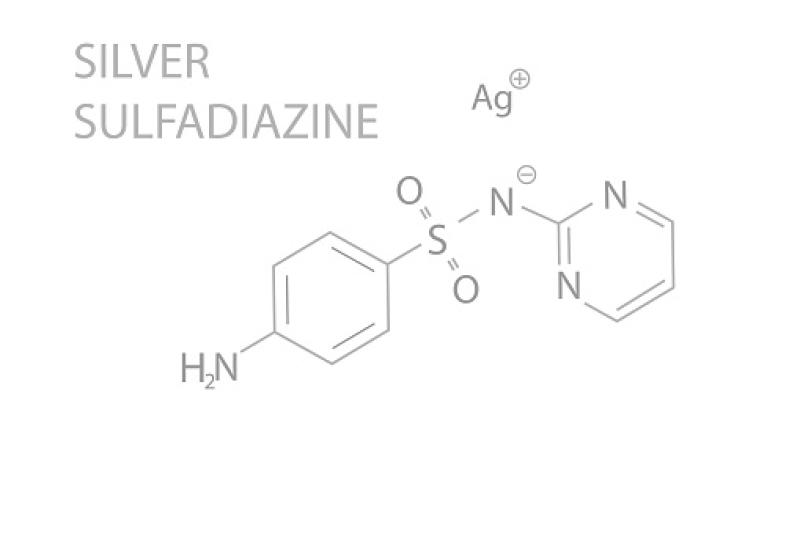Silver sulfadiazine is a widely recognized topical antimicrobial agent used primarily in the treatment of burn wounds and other skin infections. Its effectiveness in preventing and treating infections caused by bacteria and fungi has made it a staple in medical care, especially in burn units worldwide. The compound consists of silver, known for its antimicrobial properties, combined with sulfadiazine, a sulfonamide antibiotic. This unique combination allows for a broad spectrum of antimicrobial activity, which can significantly reduce the risk of infection during wound healing. Silver sulfadiazine’s role in modern wound care stems from its ability to target multiple pathogens, including antibiotic-resistant strains, making it an essential component of comprehensive burn management protocols.
Key Antimicrobial Mechanism Behind Silver Sulfadiazine’s Efficacy
The effectiveness of Silver Sulfadiazine lies in its dual-action mechanism. Silver ions actively disrupt microbial cell membranes, proteins, and DNA, thereby inhibiting bacterial replication and fungal growth. Concurrently, sulfadiazine works by interfering with the synthesis of folic acid in bacterial cells, which is essential for their survival and multiplication. The combined effect not only eradicates existing infections but also helps prevent new infections from developing on compromised skin surfaces. This antimicrobial spectrum includes gram-positive and gram-negative bacteria, as well as certain types of fungi, which are commonly responsible for wound infections in clinical settings. Moreover, silver’s slow release from the cream formulation ensures a prolonged antimicrobial effect, minimizing the frequency of application and thereby improving patient compliance.
Primary Medical Uses and Application Procedures for Silver Sulfadiazine Cream
Silver sulfadiazine cream is primarily indicated for the prevention and treatment of infections in second- and third-degree burns. It is applied topically to the affected area after careful cleaning and debridement. The cream forms a protective barrier that maintains a moist wound environment favorable for healing while exerting its antimicrobial effects. Its use is not limited to burns alone; sometimes it is prescribed for ulcers, skin graft donor sites, and other cutaneous infections prone to microbial invasion. The typical application involves a thin layer directly on the wound, covered with sterile gauze, and replaced regularly as per medical guidelines. Patient monitoring is essential during treatment to assess the wound’s response to therapy and detect any adverse reactions or allergies to sulfadiazine or silver components.
Commercial Significance and Industry Insights into Silver Sulfadiazine Products
The commercial appeal of silver sulfadiazine stems from its sustained global demand driven by increasing incidences of burn injuries and skin infections. Hospitals and clinics consistently require effective topical antimicrobial agents that can reduce infection rates, shorten hospital stays, and improve patient outcomes. The formulation’s relatively low cost and proven safety profile contribute to its widespread use, particularly in developing countries where burn injuries are prevalent. Industry players investing in silver sulfadiazine production benefit from stable sales channels and opportunities to expand through developing novel delivery mechanisms such as sprays and impregnated dressings. Market dynamics are influenced by regulatory approvals, generic availability, and competition from alternative antimicrobial compounds. Emerging research into silver-based compounds and combination therapies also shapes the strategic direction for manufacturers and healthcare providers alike.
Transactional Insights Regarding Procurement and Supply Chain for Silver Sulfadiazine Cream
Procurement of silver sulfadiazine cream involves navigating supply chains to ensure quality, regulatory compliance, and availability. Medical institutions and pharmaceutical distributors place bulk orders based on projected clinical needs, factoring in storage conditions and shelf life. Efficient supply chain management is essential to avoid stockouts, especially in burn care units with high patient throughput. Global trade patterns reflect regional demand disparities, with some countries importing significant quantities to meet their healthcare requirements. Pricing negotiations and contract tenders often emphasize product quality certifications, expiration timelines, and supplier reliability. The rise in e-commerce platforms for medical supplies has further transformed transactional processes, enabling faster access to silver sulfadiazine products and streamlined procurement workflows for hospitals and clinics.
Get This Report in Japanese Language - スルファジアジン銀
Get This Report in Korean Language - 실버 설파디아진
Read More Articles Related to this Industry –
How Agar is revolutionizing the Pharmaceutical and Biotechnology Sectors__
About Author:
Priya Pandey is a dynamic and passionate editor with over three years of expertise in content editing and proofreading. Holding a bachelor's degree in biotechnology, Priya has a knack for making the content engaging. Her diverse portfolio includes editing documents across different industries, including food and beverages, information and technology, healthcare, chemical and materials, etc. Priya's meticulous attention to detail and commitment to excellence make her an invaluable asset in the world of content creation and refinement.
(LinkedIn- https://www.linkedin.com/in/priya-pandey-8417a8173/)
